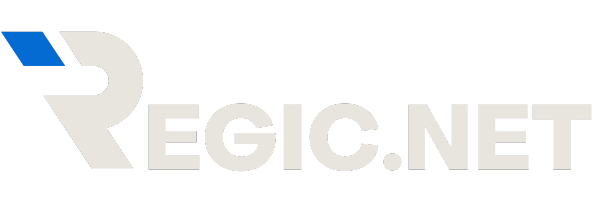Did you know that 55% of Americans worry they won’t have enough money to retire comfortably? If you’re part of that statistic, a 401(k) plan might be the solution you’ve been looking for. Think of a 401(k) as a personal savings jar for your future self, but with a superpower: it grows over time thanks to compound interest and employer contributions. Whether you’re just starting your career or planning for retirement, understanding how a 401(k) works can be a game-changer for your financial future.
In this guide, we’ll break down everything you need to know about 401(k) plans, from how they work to the benefits they offer and the challenges you might face. Let’s dive in!
What is a 401(k) Plan?
A 401(k) is a tax-advantaged retirement savings plan offered by employers in the U.S. It allows employees to contribute a portion of their paycheck to a retirement account, often with matching contributions from their employer. The money in the account is invested, typically in stocks, bonds, or mutual funds, and grows over time.
Analogy: Think of a 401(k) as planting a tree. You contribute money (plant the seed), your employer may match your contributions (add fertilizer), and over time, your investments grow (the tree bears fruit). By the time you retire, you’ll have a thriving financial garden to support you.
Key Benefits of a 401(k) Plan
1. Tax Advantages
One of the biggest perks of a 401(k) is its tax benefits. Contributions are made with pre-tax dollars, which reduces your taxable income for the year. Additionally, the money in your 401(k) grows tax-deferred, meaning you won’t pay taxes on investment gains until you withdraw the funds in retirement.
Example: If you earn 60,000 a year and contribute 5,000 to your 401(k), your taxable income drops to $55,000. Over time, the tax-deferred growth can significantly boost your savings.
2. Employer Matching Contributions
Many employers offer matching contributions, essentially free money to boost your retirement savings. For example, your employer might match 50% of your contributions up to 6% of your salary.
Real-World Example: Let’s say you earn 50,000 a year and contribute 63,000). With a 50% match, your employer adds $1,500 to your account. That’s an instant 50% return on your investment!
3. Compound Interest and Long-Term Growth
The earlier you start contributing to a 401(k), the more you benefit from compound interest. This is when your investment earnings generate their own earnings, creating a snowball effect over time.
Example: If you contribute 200 a month starting at age 25, with an average annual return of 7500,000 by age 65. If you start at 35, you’d have around $250,000. Time is your greatest ally!
4. Automatic Payroll Deductions
A 401(k) makes saving effortless through automatic payroll deductions. You set your contribution percentage, and the money is deducted from your paycheck before you even see it. This “set it and forget it” approach ensures consistent savings without the temptation to spend.
5. Portability
If you change jobs, your 401(k) is portable. You can roll it over into a new employer’s plan or an Individual Retirement Account (IRA) without losing your savings.
Challenges and How to Overcome Them
1. Limited Investment Options
Most 401(k) plans offer a limited selection of investment options, which can restrict your ability to diversify.
Solution: Focus on low-cost index funds or target-date funds, which automatically adjust your investments based on your retirement timeline.
2. Early Withdrawal Penalties
Withdrawing money from your 401(k) before age 59½ can result in a 10% penalty, plus taxes.
Solution: Treat your 401(k) as a long-term investment. If you need emergency funds, consider building a separate savings account.
3. High Fees
Some 401(k) plans come with high administrative or investment fees, which can eat into your returns.
Solution: Review your plan’s fee structure and opt for low-cost funds. If fees are excessive, consider contributing enough to get the employer match and then investing in an IRA.
Ethical Considerations
While 401(k) plans are a powerful tool, they also raise ethical questions, such as:
- Access Inequality: Not all employers offer 401(k) plans, leaving some workers at a disadvantage.
- Investment Choices: Some plans include funds that may not align with your values, such as fossil fuel companies.
Best Practices: Advocate for workplace retirement benefits and choose socially responsible investment options when available.
Ready to Secure Your Financial Future?
A 401(k) plan is one of the most effective ways to save for retirement, but it’s not a “set it and forget it” solution. Take control of your financial future by:
- Maximizing employer matches.
- Reviewing your investment options regularly.
- Avoiding early withdrawals.
Take the Next Step: If your employer offers a 401(k), start contributing today. If not, explore alternatives like IRAs or Roth IRAs. Every dollar you save now brings you closer to a comfortable retirement.
Conclusion: Your Future Self Will Thank You
Retirement might seem far away, but the choices you make today will shape your financial future. A 401(k) plan is more than just a savings account—it’s a powerful tool to build wealth, reduce taxes, and secure your golden years. Start small, stay consistent, and watch your savings grow.
Disclaimer: This content was generated with the help of AI and reviewed by an expert for accuracy. While every effort has been made to ensure the information is correct and up-to-date, it is recommended to consult with a financial advisor for personalized retirement planning advice.



